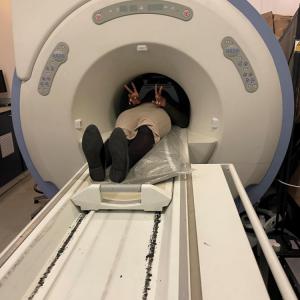You are here
Reciprocity, brains and burgers
1 September, 2023

How do you engage teenagers in your research? UNICEF’s Ethical Research Involving Children states that, in research with children, participation is as important as protection. But how does that work in practice when schools and charities are approached weekly by researchers wanting to work with young people? Especially in the heady days of late summer term when post-exam exhaustion is tangible and backpack-laden pupils are heading off on field trips to far flung oxbow lakes, how does a researcher create meaningful public and patient involvement (PPI) opportunities with adolescents? The answer, it seems, is with reciprocity, human brains and, inevitably, McDonald’s.
Teenagers are at the heart of my PhD: ‘Exploring adolescent attitudes towards vaccines and side effects’, and so I wanted to co-design my research with young people. But, given the huge disparities between advantaged teenagers and those less advantaged in terms of aspirations and access to universities, I felt sure we could offer a richer experience than just asking teenagers what they think. With support from the King’s Engagement Small Grants Award and the encouraging words of my supervisor “this is either bonkers or genius” (I’m still not sure which) I started approaching local secondary schools proposing a year-long research co-creation project with pupils studying psychology. Schools are inundated with emails, and several months of silence followed. Eventually, one school told me that they struggled to find psychology-related work experience placements for their year 12 (age 16-17 years) pupils. If I could help with that, they said, they’d be delighted to work with me for the next year.
Two weeks later I found myself at King’s Denmark Hill campus anxiously awaiting the seven – yes seven – teenagers I had agreed we’d host for a week of work experience. I had designed a week of workshops mapped both to the psychology curriculum and my research – we covered vaccines, ethics, methodologies and impact. I organised tours, guest speakers, a chance to experience a mock MRI scanner (feedback: there weren’t enough seats). Did they want to see real human brains? Of course they did. We visited the KCL Brain Bank and saw healthy and diseased brains close up (feedback: there weren’t enough seats). We organised an employability session where students were offered bespoke careers and university applications advice (feedback: it was good to have seats).
Alongside this, we also managed to co-create information sheets and assent forms and a discussion guide for our research project. The following week the year 12 pupils and I took these back into school and tested them with younger (year 8 and 9 - ages 12-14 years) pupils. In total I worked with 36 12–17-year-olds over 6 days. The impact on my research has been significant but more important has been seeing teenagers truly engage with the research, take ownership, and realise how many opportunities they have: one plans to be a therapist, another a neuroscientist, a third a criminologist. None want to be a behavioural scientist (yet). You can’t win them all.
What did I learn? Some basics: most arrived at 9.30am without having eaten, but worked better when they had a full stomach. From day two we provided a free breakfast. When faced with the choice of the King’s canteen (which only took bank cards – the teenagers only had cash) or McDonald’s, the exodus for Big Macs was extraordinary. I also learned that schools are inundated and their staff are stressed: if you can be flexible and address their needs, they are more likely to work with you. Building a meaningful, respectful and reciprocal working relationship with teenagers takes time, and there is still much work for us to do in the next year. Lastly, I learned that however exciting the experience, teenagers always need seats.
With thanks to the King’s College London (KCL) Centre for Doctorial Studies Public Engagement Small Grants, the KCL Centre for Neuroimaging Sciences, KCL Careers and Employability, KCL School of Neuroscience London Neurodegenerative Diseases Brain Bank and KCL Research Ethics Committee for their support with this project.
By: Angie Pitt




